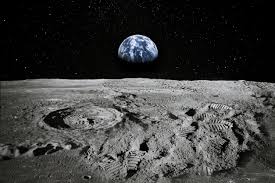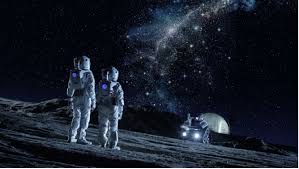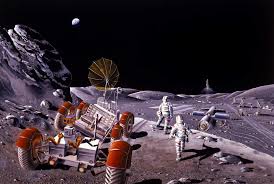The Evolution of Lunar Exploration: From the Space Race to the Artemis Missions

The Moon has long captivated human imagination and scientific curiosity. Serious lunar exploration began in the 1950s, driven by the competitive space race between the United States and the Soviet Union (USSR). Both nations focused on developing and launching robotic spacecraft to study the Moon. In 1959, the USSR’s Luna 1 became the first spacecraft to fly by the Moon. This milestone was followed by Luna 9 achieving the first successful soft landing on the Moon in 1966. The United States made a historic leap in 1969 with Apollo 11, which marked the first human landing on the Moon.
Since these early missions, lunar exploration has expanded to include contributions from multiple countries. As of January 2024, four nations—the USSR, the United States, India, and China—have successfully landed spacecraft on the Moon.

The Apollo Missions
Between 1969 and 1972, the United States Apollo missions sent twelve astronauts to walk on the Moon’s surface. These missions utilized the Lunar Roving Vehicle (LRV), allowing astronauts to travel further from their landing sites and conduct extensive scientific research. Studies included soil mechanics, meteoroid impacts, lunar ranging, magnetic fields, and the solar wind. The Apollo missions returned a total of 382 kilograms (842 pounds) of lunar rock and soil samples to Earth, providing invaluable material for scientific study.

Post-Apollo Lunar Exploration
Following the Apollo program, there was a significant pause in manned lunar exploration. However, the 1990s saw a resurgence in lunar interest with the U.S. launching robotic missions such as Clementine and Lunar Prospector. These missions suggested the presence of water ice at the lunar poles, although the Lunar Prospector’s controlled impact did not confirm this finding.
In 2009, NASA renewed its focus on the Moon with the launch of the Lunar Reconnaissance Orbiter (LRO) and the Lunar Crater Observation and Sensing Satellite (LCROSS). These missions provided detailed maps of the lunar surface and evidence of water in permanently shadowed craters. In 2011, NASA repurposed two spacecraft for the Acceleration, Reconnection, Turbulence, and Electrodynamics of the Moon’s Interaction with the Sun (ARTEMIS-THEMIS) mission. This mission studied the Moon’s interaction with solar wind. The Gravity Recovery and Interior Laboratory (GRAIL) mission in 2012 furthered our understanding by mapping the Moon’s gravity field with unprecedented precision.

The Artemis Program
In March 2019, NASA announced the Artemis program, aiming to return humans to the lunar surface. This new era of lunar exploration began with the successful Artemis I mission in November 2022, which conducted the first integrated flight test of the Orion spacecraft and the Space Launch System (SLS) rocket. Currently, the Artemis II crew is training for a flyby of the Moon, which will pave the way for future missions aiming to establish a sustainable human presence on the Moon and eventually send astronauts to Mars.

Through decades of exploration, our understanding of the Moon has dramatically increased, and future missions promise to unlock even more secrets of our closest celestial neighbor.




